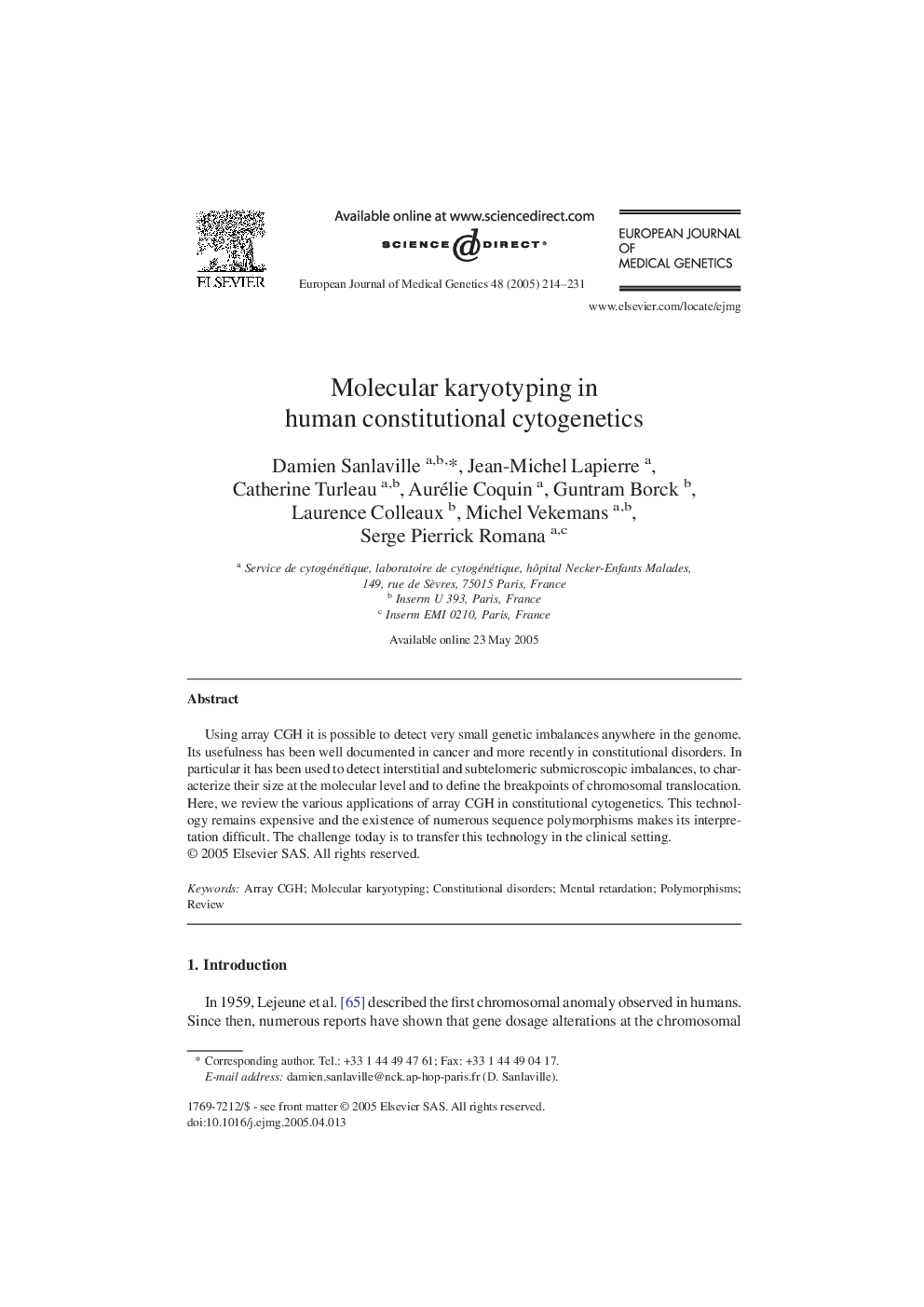| Article ID | Journal | Published Year | Pages | File Type |
|---|---|---|---|---|
| 9935787 | European Journal of Medical Genetics | 2005 | 18 Pages |
Abstract
Using array CGH it is possible to detect very small genetic imbalances anywhere in the genome. Its usefulness has been well documented in cancer and more recently in constitutional disorders. In particular it has been used to detect interstitial and subtelomeric submicroscopic imbalances, to characterize their size at the molecular level and to define the breakpoints of chromosomal translocation. Here, we review the various applications of array CGH in constitutional cytogenetics. This technology remains expensive and the existence of numerous sequence polymorphisms makes its interpretation difficult. The challenge today is to transfer this technology in the clinical setting.
Related Topics
Life Sciences
Biochemistry, Genetics and Molecular Biology
Genetics
Authors
Damien Sanlaville, Jean-Michel Lapierre, Catherine Turleau, Aurélie Coquin, Guntram Borck, Laurence Colleaux, Michel Vekemans, Serge Pierrick Romana,
